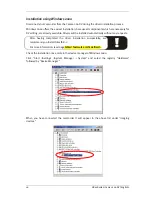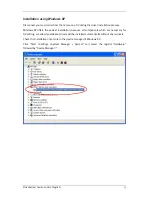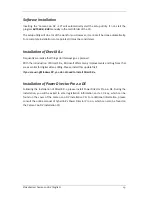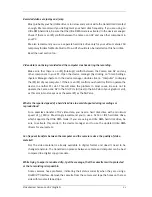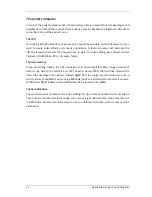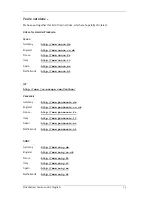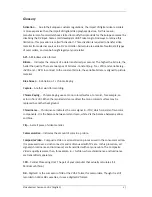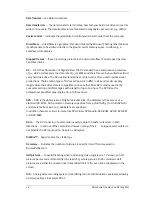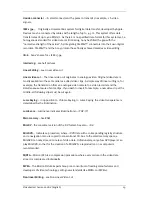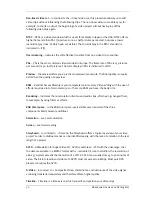
Non-linear video cut
– In contrast to the -> linear video cut, this procedure allows you to edit
video clips without influencing the following clips. The non-linear video cut enables you, for
example, to shorten a clip at the beginning of a video project without having to edit the
following video clips again.
NTSC
– NTSC is a video standard which is used, for example in Japan or the USA. NTSC offers a
higher frame rate than PAL (30 pictures or 60 -> half pictures per second, but uses a lower
resolution (525 lines, of which 480 are visible). The color display in the NTSC standard is
indicated in ->YIQ.
Overscreening
– Indicates the soft effective transition from one video clip to another.
PAL
– PAL is the most common video standard in Europe. The frame rate of PAL is 25 pictures
per second (or 50 ->half pictures. The color display in PAL is indicated in ->YUV.
Preview
– the preview offers you a practical overview of your work. The final quality is usually
better than the quality of a preview.
RAM
– Random Access Memory is your computers main memory. Video editing with the use of
effects requires a lot of main memory, so: The more RA M you have, the better it is.
Rendering
– Indicates the re-calculation of video and audio clips, after having changed them,
for example, by using filters or effects.
RGB Color space
– In the RGB color space, every visible pixel consists of the three
components R(ed), G(reen) and B(lue).
Saturation
– see Color saturation
Screen
– see Overscreening
Storyboard
– In contrast to -> Timeline, the Storyboard offers a topical overview of your video
project's order. Individual scenes can be identified easily, with the lack of a relation to the real
length of a project.
SVCD
– Abbreviation for Super Video CD. SVCD resembles a ->VCD with the advantage, that
the data is available in a MPEG2 format with a -> variable bit rate. In addition, the resolution of
480 x 576 pixels exceeds the resolution of a VCD. A SVCD can usually store 45 to 50 minutes of
video. The bit rate (audio and video) of a SVCD must not exceed 2,6 Mbps. Most pure DVD
players can replay the SVCD.
S-Video
– In contrast to -> Composite Video, chrominance and luminance of the video signal
are being transferred separately and therefore offer a higher quality.
30
VideoSystem Cameo 200 DV (English)
Timeline
– Timeline is a time axis on which you edit and position your video clips

